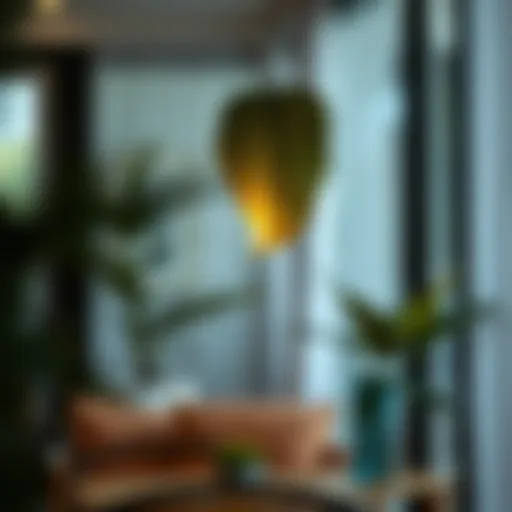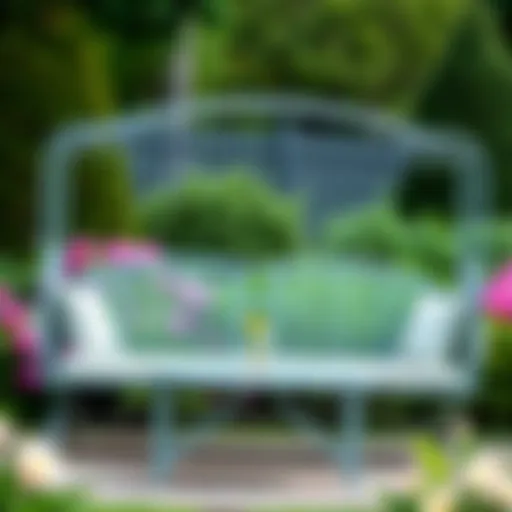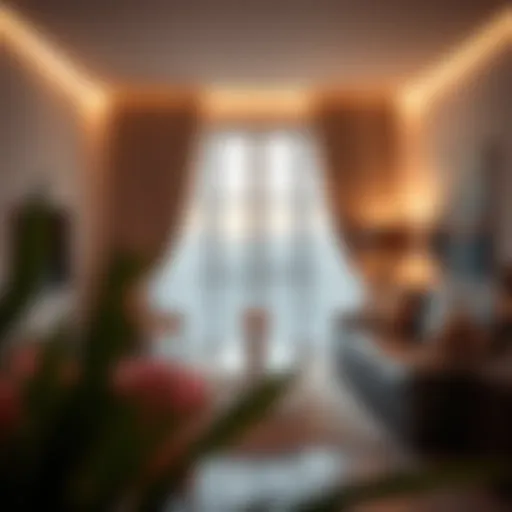Efficient Pot Top Storage for Your Kitchen
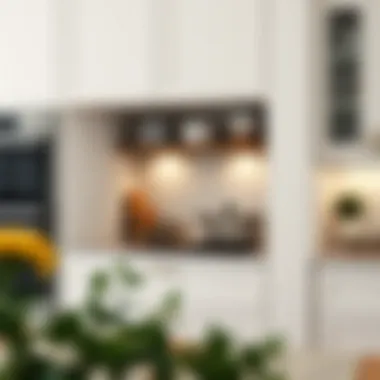
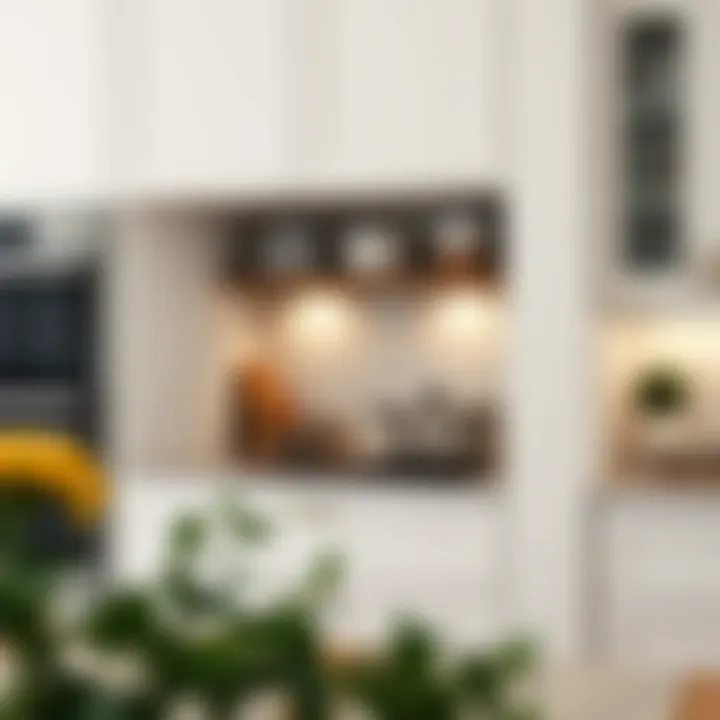
Intro
In any kitchen, it’s often the little things that add up to make a big impact. One often overlooked aspect is the storage of pot tops, which can make a tremendous difference in both functionality and design. Efficient storage solutions can serve as a catalyst in transforming chaotic countertop spaces into organized havens. With advancements in interior design and organization technology, it’s easier than ever to optimize your kitchen’s layout.
Storing pot tops may seem mundane, yet it plays a pivotal role in the overall cooking experience. A well-planned approach not only increases accessibility but also enhances the aesthetic appeal of your kitchen. Imagine opening a cabinet where every item is not only visible but elegantly displayed. Achieving such harmonization may require some deliberate planning, however, the result is often well worth the effort.
In this article, we’ll explore several effective strategies for pot top storage, taking into consideration various factors such as material choice and the impact on visual space. We aim to provide both homeowners and designers with practical insights that can lead to improved usability in the kitchen.
Let’s jump into how current furniture trends can shape your choices.
Understanding Pot Top Storage
Effective pot top storage is crucial in crafting a well-organized kitchen environment. When pot tops are easily accessible and neatly stored, cooking experiences improve significantly. It allows for more rapid meal preparation and encourages creativity in the kitchen. Think of it as the backbone of kitchen efficiency; without proper storage, even the best cooking tools can become a hindrance.
Significance of Proper Storage
The importance of proper pot top storage cannot be overstated. By employing effective methods, homeowners can save time and reduce stress while cooking. This practice encourages a smoother workflow, making the kitchen feel more inviting. Furthermore, a clean and organized kitchen tends to inspire one to cook more often.
Additionally, proper storage reduces the chance of damage to pot tops. Many materials, especially glass and ceramic, can be easily chipped or scratched. Storing these items correctly guards against unnecessary wear, extending their lifespan and keeping them looking brand new.
Moreover, good storage systems contribute to the overall aesthetics of the kitchen. Stylish storage solutions not only create a sense of order but also enhance the visual appeal. Whether it is through the use of attractive containers or creatively utilizing wall space, the right storage choices can turn these functional items into design elements.
Common Storage Challenges
Despite the numerous benefits, many individuals face storage challenges when it comes to pot tops. One of the most prevalent issues is limited space. In smaller kitchens, every inch counts and finding a suitable spot for pot tops can feel like solving a complex puzzle. Some people end up stacking them in drawers, which can lead to scratches and makes it difficult to find the right piece when needed.
Another common hurdle is the sheer variety of pot top shapes and sizes. This diversity can complicate storage solutions, requiring tailored solutions that cater to each unique piece. Often, individuals may feel overwhelmed, leading them to choose the first available option rather than the best solution.
Finally, accessibility is a concern. Pot tops need to be easily retrievable, yet, in a cramped kitchen, that can be tricky. Ensuring the right arrangement that provides easy access without cluttering can feel like walking a tightrope.
"An organized pot top storage system does not only reflect efficiency but also elevates the joy of cooking."
By understanding these challenges, homeowners can begin to explore tailored solutions. Whether it’s redesigning a kitchen layout or investing in innovative storage solutions, addressing these common hurdles leads to a more functional cooking environment.
Types of Pot Tops
When organizing pot tops, understanding the various types can make all the difference in enhancing both efficiency and aesthetics in the kitchen. Just think of it like sorting the pieces of a puzzle; getting them right can lead to a smoother cooking experience. Choosing the right material and size for pot tops not only impacts how they stack or store but also affects the overall visual appeal of your kitchen space.
Material Varieties
Metal
Metal pot tops are often made from stainless steel or aluminum. These materials stand out due to their durability and heat resistance. One thing to note is that metal pot tops can withstand higher temperatures, making them a safe option while cooking. Not only do they offer a sleek, modern appearance, but their reflective surface can also lend a high-end feel to your kitchen.
However, these tops can be a bit heavy, and depending on the finish, may show fingerprints or scratches more easily than other materials. So, if you’re one who hates constant cleaning, you might want to consider that.
Glass
Glass pot tops add a touch of elegance that can be hard to beat in any kitchen setting. They allow you to see what's inside while cooking, which is quite handy if you're going for a simmer. The transparency of glass provides a clean look, and since it doesn’t retain stains or odors, maintaining cleanliness is a breeze.
What you have to be cautious about is the fragility that comes with glass. If not stored properly, it can chip or break, which would be a costly inconvenience. Ideally, glass tops work best when combined with cookware that has similar qualities to enhance safety and utility.
Ceramic
Ceramic pot tops bring a unique feel to the kitchen with their wide variety of colors and designs. One of the standout features of ceramic is its excellent heat retention, which can be beneficial for slow cooking. Additionally, they are generally dishwasher safe, making cleanup simple after a big meal.
But there’s a flip side: ceramic can be prone to chipping and typically isn't as heat resistant as metal or glass. Therefore, if you value aesthetics over ruggedness, ceramic might be right up your alley, but just keep an eye on those edges.
Shape and Size Considerations
Standard Sizes
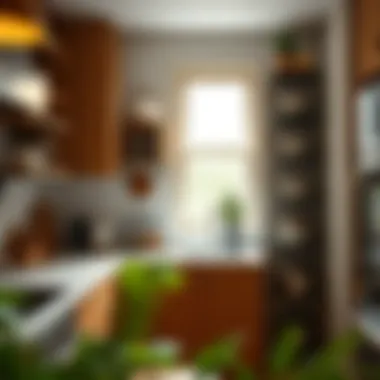
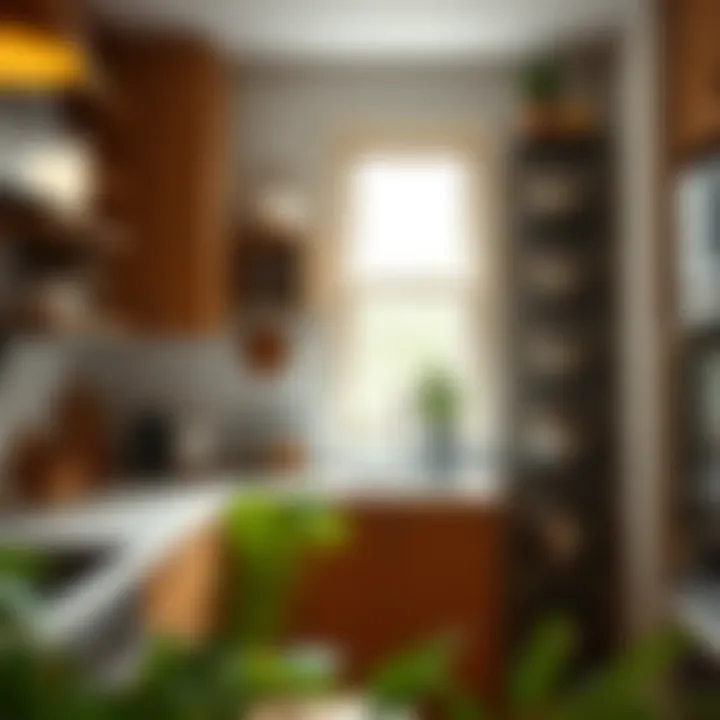
When talking about standard sizes for pot tops, the convenience factor plays a major role. Most manufacturers design pot tops to fit common pot sizes, ensuring that people can easily replace or mix and match without much hassle. Utilizing standard sizes often means less trial and error, saving you time and effort in the long run when searching for matching tops.
Still, one restriction is that standard sizes may not cater to all cookware pieces out there. If you have a unique collection, you might find that standard tops don't quite fit, limiting your organization options.
Custom Options
Custom options provide a level of flexibility that standard sizes simply can't. When you design pot tops specifically for your cookware, you ensure a perfect fit, which can enhance both functionality and aesthetics. This approach allows for a personal touch, making each piece feel more tailored.
However, it comes with a caveat: custom fittings often involve a longer lead time and possibly a higher cost. Therefore, weighing your options is paramount. If you favor a bespoke kitchen look, then investing in custom options could be worth every penny.
Evaluate Your Kitchen Space
Understanding how to make the most of your kitchen space can be a game changer when it comes to pot top storage. Space evaluation isn’t just about fitting in your pots and pans; it’s about creating a systematic approach that enhances both the functionality of your kitchen and its overall appearance. The way you arrange your storage solutions can significantly affect your efficiency in cooking and your enjoyment of the kitchen environment.
Layout Analysis
Before you even think about where to put your pot tops, take a step back and assess your kitchen layout. Are the drawers spacious enough? Do you have unused wall areas ready for innovative shelving? More often than not, kitchens suffer from awkward layouts. For instance, a cramped L-shaped kitchen may limit horizontal space for traditional pull-out drawers. Instead, think about vertical options.
Consider the following to enhance your layout:
- Flow and Accessibility: Check how you move around your kitchen while cooking. Ideally, your pot tops should be within arm's reach of your main cooking area. Analyze the pathways and ensure you aren't doing unnecessary gymnastics just to grab that casserole lid.
- Zoning: Maybe you can create zones dedicated to cooking, prepping, and storage. This reconfiguration helps to keep pot tops close to their corresponding pots. If it takes longer to find a lid than to cook a meal, something is amiss.
- Utilizing Corners: Don’t let those tricky corner cabinets gather dust; they can be a strategic spot for storing pot tops. Specifically designed products for corner cabinets can provide access while making the most of odd spaces.
"Effective kitchen design embraces both aesthetics and efficiency. Pay heed to the space you have—the way you manage it determines the ease of culinary creations."
Accessibility Factors
Accessibility is key when it comes to pot top storage. You might have the best storage system known to mankind, but if you can't get to your pot tops without a hassle, it defeats the purpose. Here are essential factors to consider:
- Height Matters: If you’re reaching for a pot top high up in cabinets, think critically about whether that’s a wise choice. Storing frequently used lids and tops at eye level can cut down on frustration and save time. Conversely, keeping less frequently used items higher works well.
- User Consideration: Think about who uses the kitchen. If you have kids or someone with mobility issues, they might need different accessibility. A pulling system or a sliding shelf could make life easier.
- Visibility: Make pot tops visible rather than hidden. The clearer they are, the quicker you'll locate the right lid. Open shelving, for example, not only offers ease of access but can also be a design focal point—if styled well.
In sum, evaluating your kitchen space involves a thorough understanding of your layout and accessibility factors. Ensuring your storage solutions are not only visually appealing but also practical can create a kitchen that works as hard as you do.
Storage Solutions for Pot Tops
Effective storage solutions for pot tops form the backbone of a well-organized kitchen. The importance of a system that not only secures but also enhances accessibility cannot be overstated. When looking at storage options, it’s essential to assess how they influence both efficiency and aesthetics. When pot tops are stored correctly, cooking becomes smoother and more enjoyable, reducing the time spent fumbling around in drawers or cabinets. Moreover, the right storage can transform your kitchen into a visually pleasing environment, aligning with your personal style.
In this section, we will explore various methods to store pot tops, focusing on drawer dividers, wall-mounted systems, and open shelving options. Each method presents unique characteristics and advantages, empowering homeowners and designers to choose what suits their needs best.
Drawer Dividers
Dividing drawer space can maximize organization and minimize chaos. Custom dividers are a clever way to maximize drawer efficiency while also ensuring that pot tops remain easily accessible. One specific aspect of designing custom dividers is their flexibility. You can create varying widths and heights tailored to your specific pot top sizes. This custom approach can significantly enhance the overall storage efficiency and prevent damage to your pot tops from sliding or piling on each other.
A key characteristic of these dividers is their adaptability. Unlike standard dividers, custom designs can fit into the unique spaces of your kitchen drawers. They cater to personal preferences while optimizing usability. A unique feature of custom dividers could be the ability to incorporate materials that complement kitchen decor—like wood or bamboo.
However, there are some disadvantages. Creating custom dividers might require more upfront investment, both in terms of time and finances.
Choosing Materials
Choosing the right materials for drawer dividers plays a crucial role in their overall functionality. A particular consideration is durability; dividers made from robust materials like plastic or wood can handle the wear and tear they might encounter.
Materials need to align with the kitchen's overall aesthetic, making them an appealing choice beyond practicality. For instance, wooden dividers can bring warmth whereas stainless steel options can impart a modern touch.
When selecting materials, a unique feature could be their ease of cleaning. High-traffic areas in the kitchen can quickly attract dust and grime, so materials that can be easily wiped down are beneficial. The downside, however, could include the heavier weight of solid wood or the potential for wear in more delicate materials.
Wall-Mounted Systems
Embracing vertical storage can yield numerous advantages. Wall-mounted storage systems are an excellent space-saving solution that not only stores pot tops but also showcases them beautifully. The chief characteristic of vertical storage is maximizing unused wall space, keeping countertops clear while providing easy access.
One unique feature of wall-mounted systems is their inherent ability to serve as a design element in the kitchen. Brightly colored pot tops can become part of your decor, adding a splash of personality to an otherwise standard space. But, it's essential to consider that installation requires wall integrity and may not be suitable for all kitchen layouts.
Installation Tips
When looking at wall-mounted systems, proper installation is vital to ensure they are secure and effective. A key aspect to consider when installing these systems is the choice of hardware. Using suitable anchors and mounts can make all the difference in the longevity and safety of the storage.
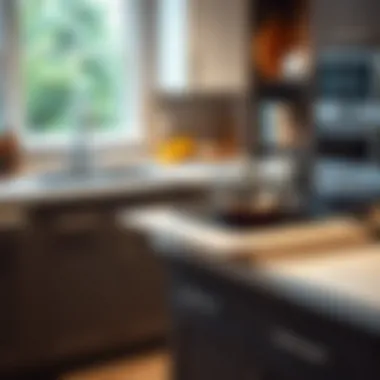
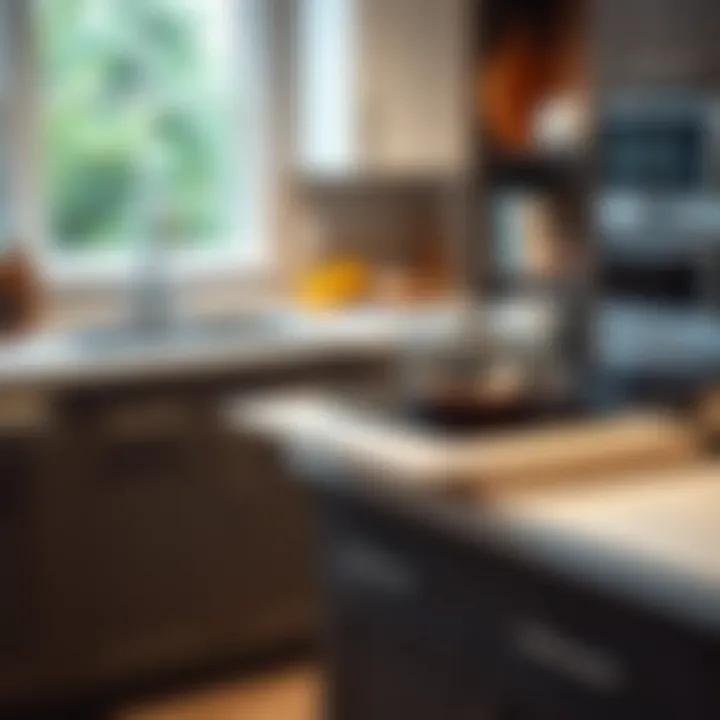
Moreover, planning the position of the system based on height and reach is crucial, especially for those shorter in stature or those with mobility issues, to prioritize ease of use. Unique features may also include modular designs, allowing homeowners to rearrange or expand their storage as needs evolve.
However, there are drawbacks, particularly in needing wall space and the potential for wear on the pot tops from exposure.
Open Shelving Options
The trend of open shelving is another popular choice for pot top storage. The main appeal lies in its combination of accessibility and aesthetics. By displaying pot tops on open shelves, homeowners can easily see their collection, making them more likely to use the items they already own instead of letting them collect dust.
One key characteristic of open shelving is its ability to allow for personalized styling. Homeowners can intertwine pot tops with decorative elements, thereby creating a cohesive look that reflects their personality. However, while open shelves permit for easy access, dust accumulation can be a concern, as not all pot tops are designed for visibility.
Styling Open Shelves
When it comes to styling open shelves, the arrangements can reflect individual creativity. Layering items and mixing pot tops with other kitchen essentials, like books or decorative jars, can turn a functional area into a visual delight. This approach can highlight diversity in size, color, and texture, lending to a well-curated space.
The downside is that this style demands diligence when it comes to cleaning, as visibility means that dust and dirt can easily gather. It may also impose a certain aesthetic pressure, requiring regular updates to keep the display fresh and engaging.
Material Considerations
The materials selected for open shelves can significantly influence both functionality and style. For instance, choosing metal shelves provides durability and a modern look, while wooden shelves add warmth and character. The right choice plays into the overall kitchen scheme, contributing to or detracting from the desired aesthetic.
Unique features might include adjustable shelf heights, allowing flexibility based on pot top sizes. However, depending on the material and thickness, visibility can be affected; thicker shelves may obscure smaller items behind them.
Overall, the choice of material can have significant advantages, but require thoughtful selection to balance out beauty and practicality.
By carefully considering these storage solutions, homeowners and designers can create inviting kitchens that prioritize both efficiency and aesthetics.
Innovative Pot Top Storage Ideas
When it comes to storing pot tops, innovation plays a critical role in maximizing both functionality and aesthetics. Such creative approaches can significantly enhance the organization of your kitchen space, not to mention add a dash of style. The right storage solutions can transform cluttered cabinets into streamlined areas of easy access, making cooking and serving more efficient. Let’s delve into some ingenious ideas that can help elevate your pot top storage game.
Magnetic Strips
Effectiveness and Aesthetics
Magnetic strips have gained traction in the world of kitchen organization because of their dual nature. They do not only excel in holding pot tops securely but also add a modern flair to the kitchen wall. This arrangement allows pot tops to be displayed rather than stored away, transforming a plain wall into a functional art piece. The ability to see your pot tops at a glance simplifies picking the right one while cooking, reducing the frustration of rummaging through stacks.
A big plus of this method is the clean, minimalistic look that appeals to many homeowners and designers alike. The simplicity of installation is a cherry on top, making it a preferred option for many.
Installation Process
Setting up magnetic strips isn't rocket science, yet it requires some careful planning. Most strips come with adhesive backing, allowing for easy attachment to various surfaces. Alternatively, some strips may require screws for a more permanent fixture. The key aspect here is choosing the right location—an area that’s reachable and convenient but also integrates well with the overall kitchen decor. This process boosts functionality while retaining visual coherence in the space. One consideration, however, is ensuring that the wall surface can support the weight of the pot tops, particularly heavier metal ones.
Rolling Carts
Mobility Benefits
A rolling cart allows your pot tops to be moved around with ease, making it an invaluable asset in a busy kitchen. Think about it: you can wheel them closer to your cooking area when needed, then tuck them away when not in use. This flexibility not only saves space but also enhances the overall workflow.
Furthermore, these carts often come with wheels designed for smooth movement, so heavy lifting becomes a thing of the past. This easy maneuverability significantly contributes to a more organized and less stressful cooking environment.
Design Considerations
When selecting a rolling cart, aesthetics shouldn't be overlooked. They come in a plethora of styles, materials, and colors. A well-chosen cart complements the existing kitchen decor—be it a rustic wooden cart or a sleek metallic model. Functionality and design must go hand in hand. You want to choose a rolling cart that not only meets organizational needs but also wows your guests. However, balancing style and usefulness can be a challenge; some carts may lack ample storage or be too bulky to move around easily.
Custom Built-Ins
Collaborating with Designers
For those willing to invest a bit more, custom built-ins offer a personalized touch tailored to specific needs. Collaborating with designers can help you create a storage solution that perfectly fits your kitchen layout while optimizing space. This allows for clever use of previously underutilized areas, adding significant value not only in storage but in the overall aesthetic of the kitchen.
Designed solutions can incorporate various features like pull-out shelves for easy access or concealed compartments for a neater appearance. The beauty of this option lies in its ability to transform your storage needs into a seamless part of your kitchen’s architecture. On the downside, it may require a larger budget, so consider whether the investment aligns with your overall goals.
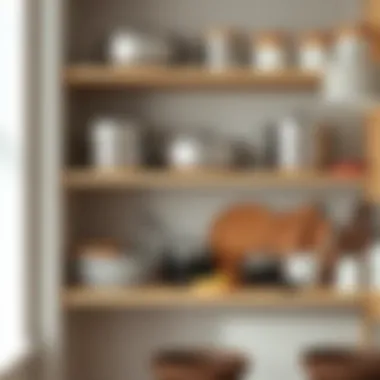
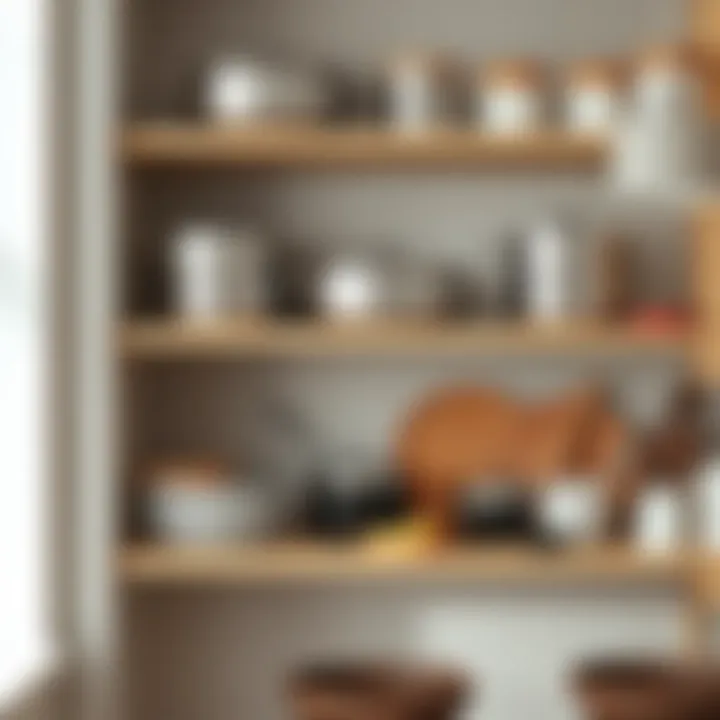
Planning for the Future
When discussing custom built-ins, it's essential to think long-term. A well-planned storage solution should not only meet current demands but anticipate future needs as well. This could involve considering changes in family size, lifestyle, or even evolving cooking habits.
Therefore, working with designers isn't just about aesthetics; it's about future-proofing your kitchen. Good design guides like this enable adjustments down the line with minimal hassle. One potential disadvantage is that making changes after installation may require additional costs and effort. But in the grand scheme, the advantages often outweigh the shortcomings.
Factors Impacting Selection
When it comes to storing pot tops effectively, several factors play an influential role in what selection to make. Recognizing these factors becomes essential not just for optimizing space in a kitchen but also for ensuring durability and aesthetic appeal. It's all about making choices that resonate with one's needs while keeping functionality at the forefront.
Material Durability
Impact of Environment
Understanding the environment where your pot tops will persist is key to selecting the right materials. Certain materials thrive in specific conditions better than others, often making or breaking your storage setup. For instance, metal pot tops may be great in a dry kitchen but could suffer corrosion in more humid environments. They tend to boast high durability, resisting warping or cracking under pressure, making them a popular choice for serious cooks.
That said, glass tops offer a certain elegance, shining brightly under the right conditions. However, their volatility can be concerning; a simple drop on a hard floor can lead to disaster. Considering your kitchen's moisture levels, temperature fluctuations, and even airflow can significantly influence your choice of material—yet balancing durability and functionality is where true success lies in the art of pot top storage.
Maintenance Needs
Every material has unique maintenance needs, and this aspect can greatly impact decision-making as well. Metal requires occasional polishing to fend off tarnishing, while glass might need more regular, careful cleaning to keep it sparkling. The maintenance melody is a crucial element in prolonging the lifespan of your pot tops.
For those who prefer low-maintenance solutions, ceramic pot tops usually fit the bill. They are not only aesthetic but are also easy to clean, often just needing a gentle wipe down. However, this ease can be misleading; without careful handling, ceramics can chip and crack. Selecting materials that align with both your cleaning habits and lifestyle could either save time in the long run or lead to more frequent replacements than anticipated.
Aesthetic Cohesion
When choosing storage solutions for pot tops, it’s crucial to consider how the materials and styles will harmonize with your kitchen's overall aesthetic.
Aesthetics aren’t just about looks; they reflect a sense of identity and style in your culinary haven. Consider how the choice of materials, from shiny metals to earthy ceramics, can either clash or complement your existing décor. For example, sleek stainless steel lids may clash with rustic wood shelving, whereas matte black pot tops can create a modern, cohesive look.
Beyond material, consider the organization method too. Open shelving featuring a mix of textured materials can produce a visual feast. People appreciate spaces that resonate visually as much as functionally. Cohesion in style can promote a seamless transition from one area to another and can transform chaos into a composed atmosphere. Engage in the journey of curating a stunningly organized yet functional space in your kitchen.
Practical Maintenance Tips
Proper maintenance of pot top storage solutions is fundamental to ensure their longevity and functionality. The kitchen is often considered the heart of the home, and an organized space enhances not just aesthetics but also efficiency. If pot tops are properly maintained, they can contribute significantly to the overall look and feel of your kitchen and make cooking and preparation a breeze.
Cleaning and Care
To maintain the pot tops in your kitchen, you should clean them regularly. Depending on the material, cleaning can vary. For example, metal pot tops may only require a simple wipe-down with a damp cloth, while ceramic and glass pot tops may need a bit more effort, like mild soap and water. Here are some important considerations:
- Frequency of Cleaning: A weekly cleaning schedule is a good practice. This prevents build-up.
- Proper Tools: Soft cloths and non-abrasive scrubbers work well. Avoid harsh chemicals that can leave residues or damage certain materials.
- Drying: Always dry pot tops thoroughly after cleaning. This prevents water stains and helps maintain their appearance.
Remember, a little attention to these aspects means a longer-lasting optimal storage system. Your pot tops not only deserve care but also a respectful and efficient storage solution.
Long-Term Storage Solutions
Long-term storage is another aspect where attention can yield significant benefits. If you’re not regularly using certain pot tops, considering how to store them effectively becomes essential:
- Climate Considerations: Sometimes you might need to store pot tops in an area less susceptible to temperature fluctuations to prevent warping or deterioration.
- Separation: Consider using cloth or felt separator sheets. This method keeps pot tops scratch-free and allows for easier retrieval when needed. They will not clink against each other.
- Accessibility: Design your storage location with future accessibility in mind. Keep frequently used pot tops at the front and store less frequently used ones at the back.
Adhering to these maintenance tips will create a more enjoyable cooking experience, allowing you to focus on culinary creativity rather than the hassle of searching for pot tops or dealing with disorganization.
Ending
As we wrap up our exploration into efficient pot top storage, it's essential to highlight why this topic matters. Good storage solutions not only keep our kitchens tidier but also enhance their overall functionality. Effective pot top storage plays a pivotal role in an organized kitchen, impacting both culinary performance and aesthetics.
Summarizing Key Points
In our discussion, key elements emerged that are integral to pot top storage:
- Material Choice: Choosing the right material for storage solutions affects durability and maintenance. From metal to glass and ceramic, each has unique characteristics that can complement kitchen decor.
- Accessibility: Efficiently stored pot tops mean easier access while cooking, leading to a more enjoyable cooking experience.
- Innovative Ideas: Using creative storage methods like magnetic strips or custom built-ins not only maximizes space but also adds a touch of personal style to your kitchen.
- Maintenance: Regular cleaning and care are crucial for extending the lifespan of your storage solutions, ensuring they remain both functional and beautiful.
By emphasizing these aspects, homeowners, renters, and designers can glean insights into how optimizing storage can propel their kitchens toward both efficiency and charm.
Future Trends in Kitchen Storage
Looking ahead, several trends are emerging in the realm of kitchen storage. Homeowners are increasingly gravitating towards designs that prioritize not merely functionality but also aesthetic value. Here are some points to consider:
- Eco-Friendly Materials: There's a rising demand for sustainable materials in kitchen storage solutions, aligning with broader environmental consciousness.
- Smart Storage Solutions: Technology integration, such as app-controlled storage systems, is becoming commonplace, making organization easier and more intuitive than ever.
- Adaptable Designs: Flexible storage solutions that allow for easy customization are gaining traction, giving homeowners the freedom to change layouts based on their needs.
- Multifunctional Furniture: Items that serve various purposes, like pot top storage that also acts as a counter or dining area, are becoming staples in modern kitchens.





